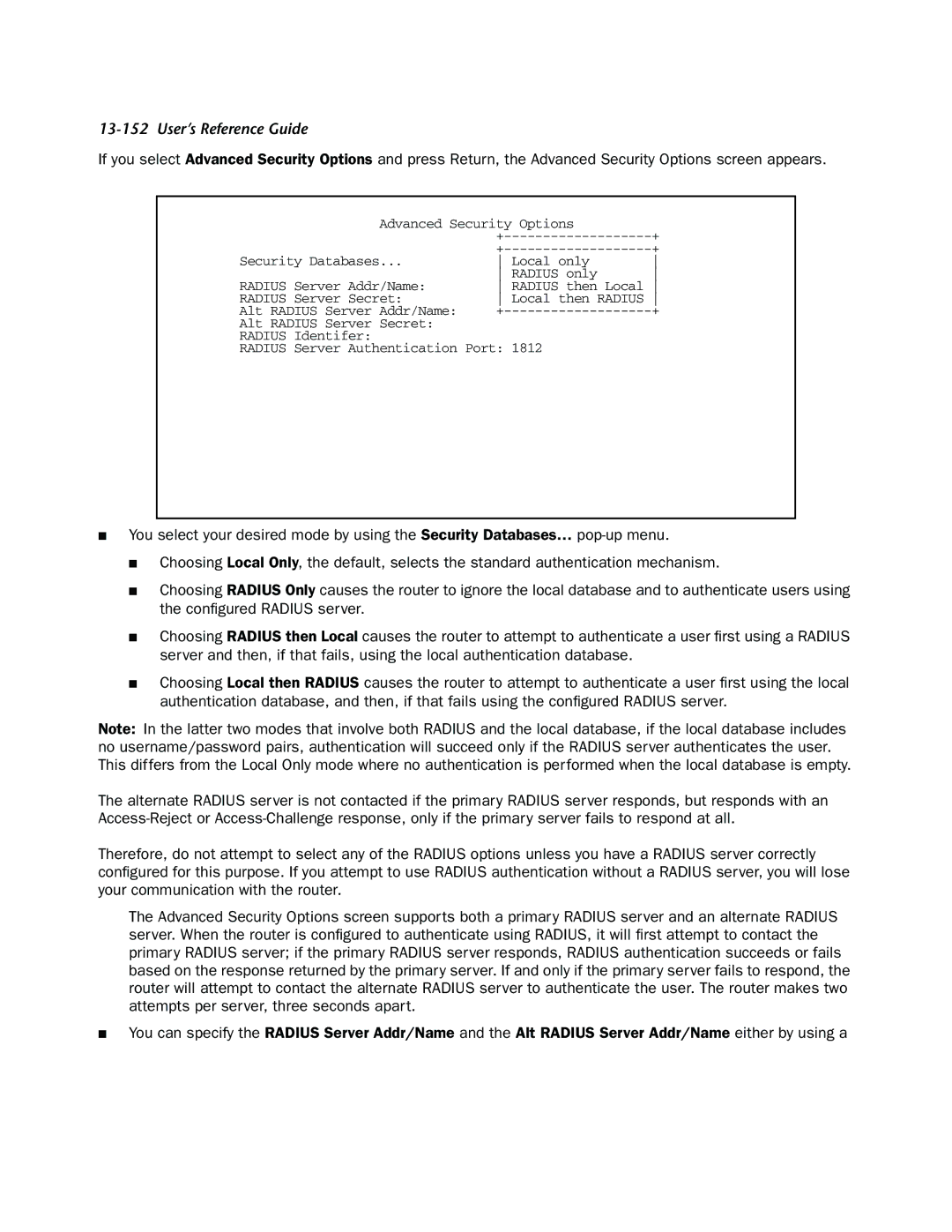
13-152 User’s Reference Guide
If you select Advanced Security Options and press Return, the Advanced Security Options screen appears.
Advanced Security Options |
| ||
| + | ||
| + | ||
Security Databases... | Local only | ||
| RADIUS only | ||
RADIUS Server Addr/Name: | RADIUS then Local | ||
RADIUS Server Secret: | Local then RADIUS | ||
Alt RADIUS Server Addr/Name: | + | ||
Alt RADIUS Server Secret: |
|
|
|
RADIUS Identifer: |
|
|
|
RADIUS Server Authentication Port: | 1812 |
| |
■You select your desired mode by using the Security Databases…
■Choosing Local Only, the default, selects the standard authentication mechanism.
■Choosing RADIUS Only causes the router to ignore the local database and to authenticate users using the configured RADIUS server.
■Choosing RADIUS then Local causes the router to attempt to authenticate a user first using a RADIUS server and then, if that fails, using the local authentication database.
■Choosing Local then RADIUS causes the router to attempt to authenticate a user first using the local authentication database, and then, if that fails using the configured RADIUS server.
Note: In the latter two modes that involve both RADIUS and the local database, if the local database includes no username/password pairs, authentication will succeed only if the RADIUS server authenticates the user. This differs from the Local Only mode where no authentication is performed when the local database is empty.
The alternate RADIUS server is not contacted if the primary RADIUS server responds, but responds with an
Therefore, do not attempt to select any of the RADIUS options unless you have a RADIUS server correctly configured for this purpose. If you attempt to use RADIUS authentication without a RADIUS server, you will lose your communication with the router.
The Advanced Security Options screen supports both a primary RADIUS server and an alternate RADIUS server. When the router is configured to authenticate using RADIUS, it will first attempt to contact the primary RADIUS server; if the primary RADIUS server responds, RADIUS authentication succeeds or fails based on the response returned by the primary server. If and only if the primary server fails to respond, the router will attempt to contact the alternate RADIUS server to authenticate the user. The router makes two attempts per server, three seconds apart.
■You can specify the RADIUS Server Addr/Name and the Alt RADIUS Server Addr/Name either by using a
